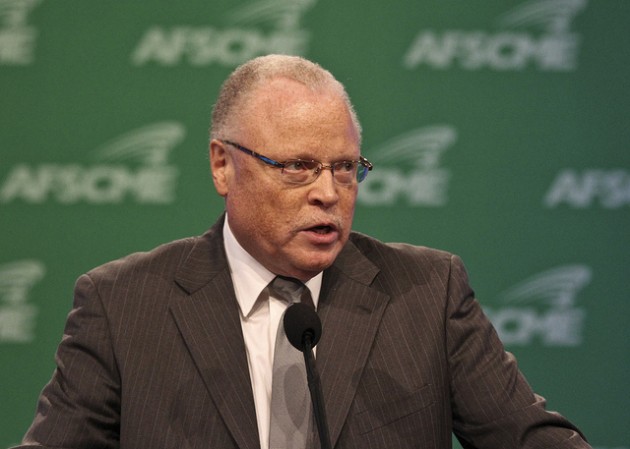This story was originally published at Watchdog.org.
Workers with the freedom to opt out of paying union bosses are more likely to die on the job, according to one of the nation’s largest labor unions.
Right-to-work laws preventing mandatory union dues are already on the books in 24 states, and are being considered in forced-unionism states including New Mexico, Wisconsin, Kentucky and Missouri.
The Washington, D.C., headquarters of American Federation of State, County and Municipal Employees posted a graphic to its official Facebook page and Twitter feed Jan. 4 claiming there are 51 percent more workplace fatalities “in RTW states where unions can’t speak up on behalf of workers.”

AFSCME pushed the graphic to its 23,000 Twitter followers again every day from Jan. 5 to Jan. 10, and shared it with the union’s 103,000 Facebook fans a second time on Jan. 6.
No sources are cited for any of the numbers on the infographic, and AFSCME didn’t respond to a Watchdog.org request for more information. Taken at face value, AFSCME paints a bleak picture of life in Texas, North Carolina, Tennessee and the other states where unions cannot take mandatory dues.
However, there is no truth to the assertion “unions can’t speak up on behalf of workers” in right-to-work states; right-to-work laws simply stop unions from taking forced fees from nonmembers. Right-to-work does nothing to prevent workers from joining a union or participating in collective bargaining.
What is AFSCME’s source for its workplace fatalities claim? A sheet of talking points produced by union coalition AFL-CIO in 2002. The entire “‘RIGHT TO WORK’ IS WRONG” infographic, in fact, comes from the same 2002 AFL-CIO talking points.
We Are Ohio — a union front into which AFSCME and its affiliates have pumped over $11 million — created the graphic shown above in 2012.
More recent versions of the annual AFL-CIO “Death on the Job” report cited in the 2002 AFL-CIO document used for the infographic make no mention of right-to-work, and do not appear to adjust state workplace fatality rates to account for dramatically varying industries.
U.S. Department of Labor data confirm injuries are far more common in relatively dangerous occupations such as farming, forestry, trucking, mining and construction — occupations that are far more prevalent in right-to-work states in the South and the West than in forced-union states in the Northeast.
“This is the most despicable union propaganda I have ever seen; they’re basically saying ‘right-to-work could kill you.’ That’s outrageous, and as far as I know has zero data to back it up,” Matt Patterson, executive director of the Americans for Tax Reform Center for Worker Freedom, told Watchdog.org via email.
“And in regards to the economic effects of right-to-work, the union is flat wrong — new research done by economist Dr. Richard Vedder shows that incomes rise after the passage of right-to-work laws,” Patterson added, citing a study published by Competitive Enterprise Institute.
“Right-to-work laws also lead to significant job growth: From 1977-2012, employment growth in right-to-work states outpaced the national average by 34 percent,” Patterson continued.
“The truth is right-to-work leads to more jobs and increased income. Also more freedom, which is what unions really object to — they don’t want you to be able to choose whether or not you belong to a union. They want to force workers onto their rolls, and force them to pay tribute.”
Promoted repeatedly by AFSCME, We Are Ohio’s infographic is certain to show up elsewhere as unions and their front groups fight labor reforms across the country.
“You’re more likely to die if you don’t pay us” may seem like tin-eared messaging for union bosses to employ against right-to-work, but it’s consistent with the tone of other union rhetoric.
In a Feb. 22, 2012, post on AFSCME’s official website, Clyde Weiss detailed the union’s case against letting workers opt out of paying dues. “We call those workers ‘free riders’ because they take, for free, what others are willing to pay for,” Weiss wrote.
Supporters of right-to-work “simply want to undermine the middle class by breaking the power of workers to stand up for their rights and lowering wages and benefits for everyone across the board,” Weiss explained, implying workers can’t be trusted to choose whether to pay a union.
AFSCME paid Weiss $98,875 in 2012 for his work as a publications associate, based on the union’s annual report to the Department of Labor.





